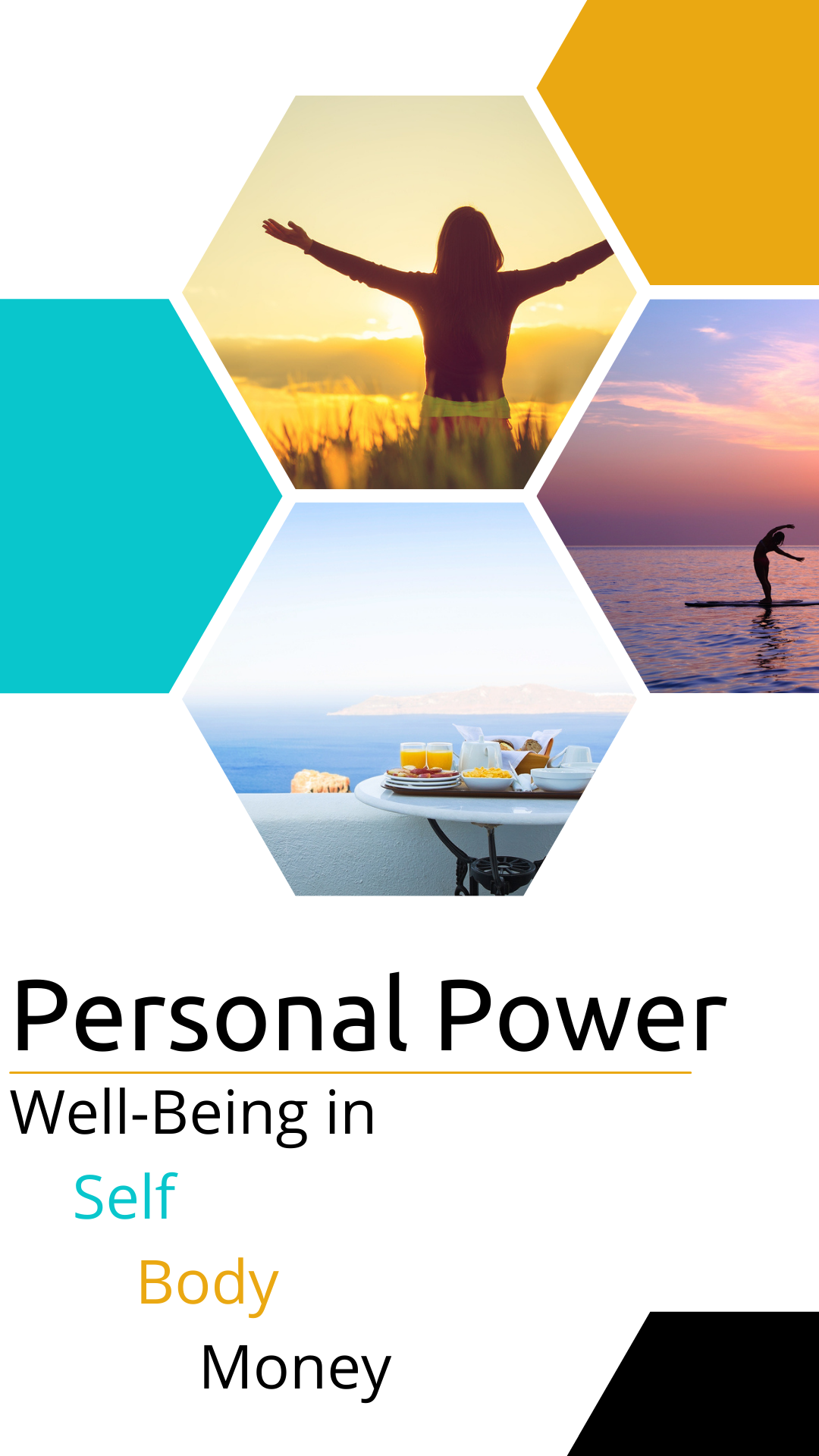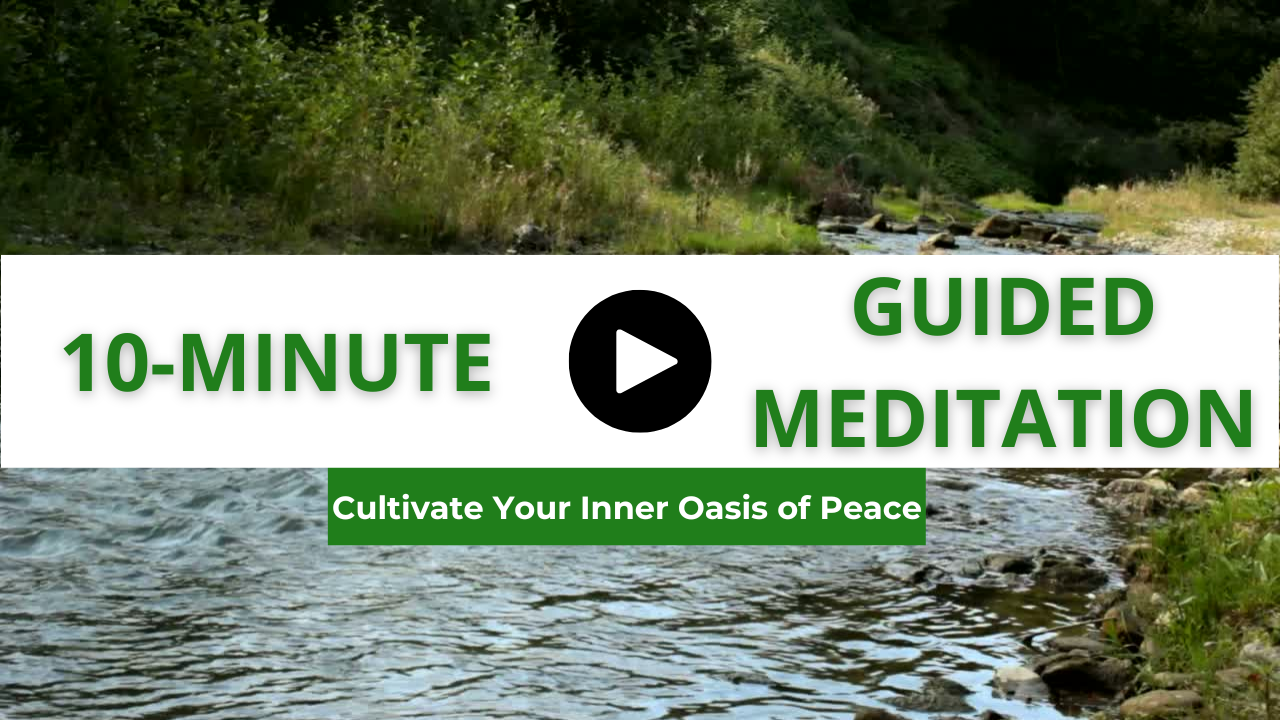
10-Minute Guided Meditation
KEY TAKEAWAY: Meditation is a powerful tool to help us manage stress and cultivate greater inner peace. If you are looking for greater inner calm, consider starting a daily practice of meditation if you haven’t already. Scroll down for links to the article and video on why and how to meditate and a 10-minute guided meditation video to help you get started.
(Excerpt from The Personal Power Program book)
Imagine this: You go to your job, and you give a presentation. Your boss praises your work. The same day, the stock market goes up and, along with it, your net worth. Your partner cooks you dinner to show you how much he loves you. You feel great; you’re walking on air. The next day (after getting a big repair bill you don’t know how you’ll pay), your car breaks down on your way to work, and when you finally get there, you see the monthly results, which are dismal. Your boss criticizes you, and you fear losing your job. The stock market plummets and, along with it, your net worth. Your partner is in a terrible mood and is insensitive to your need to talk, acting emotionally unavailable. Your sense of well-being plummets, and life feels hard.
In both scenarios, how you feel is a result of what is happening around you. Life circumstances are buffeting you like a leaf in the wind, and it is a situation that many of us find ourselves in often because there is always something that can buffet us like a leaf in the wind. There is always something that can hijack our thoughts, emotions, and our lives. And while it’s natural to feel impacted by what is happening around us, when we let it create inner turmoil and stress that takes us over, it’s damaging to our well-being and the quality of our lives.
Research shows that chronic stress — stress experienced over a prolonged period — can impact everything from how our brain functions, cardiovascular system, appetite, gastrointestinal system, hormones, musculoskeletal system, and immune system.¹ It may contribute to health-impacting conditions like hypertension, heart attack, stroke, depression, anxiety, and even addiction.¹ And it doesn’t stop there. When we can’t escape that ongoing inner storm, all areas of our lives can suffer — our relationships, work, and more — because the inner turmoil and stress we are experiencing show up in those areas, too.
We need to be able to find peace. And peace is something we can only find inside ourselves. It doesn’t come from the outside. No matter how tempting it may be — and many of us try — to create peace by taking charge of everything and everyone around us, hoping to have some inner relief if only for a blessed moment, it’s a draining solution that doesn’t work. No matter how hard we try, how hard we try to plan, maneuver, and control things in our lives so we don’t experience a disruption, there will always be something we can’t plan for, maneuver, or control that could disrupt our lives. There will always be something to steal that outer peace away, so we need to cultivate peace inside.
So, how do we cultivate inner peace? How do we find the peace and comfort we need when all around us is not always peaceful or comfortable? How do we avoid falling victim to uncontrollable external happenings and getting mentally and emotionally swept up by what is happening around us?
———
A key tool in our inner peace toolbox is SDASU (Sit Down And Shut Up), otherwise known as meditation. In my article Need an injection of inner peace? Try SDASU and video A Tool to Manage Stress & How More Inner Peace, I talk about why and how to meditate.
As a supplement to that, I’ve created a 10-minute guided meditation to help you get started. Watch it here:
In addition to mine, there are many other great videos out there; I especially appreciate the meditation videos by “Calm.” (Go to YouTube and search for “Calm Guided Meditation.”)
As with everything, work what works for you. However, if you are dealing with stress, don’t just suffer. Take the time to find what works for you and, as part of that, try meditation.
References:
1: Impacts of Chronic Stress
American Psychological Association (2018, November 1). Stress effects on the body. Retrieved from https://www.apa.org/topics/stress/body#:~:text=Chronic%20stress%2C%20or%20a%20constant,a%20toll%20on%20the%20body.
WebMD (2022, December 16). What Does Stress Do to the Body? Retrieved from https://www.webmd.com/balance/stress-management/stress-and-the-body
Yaribeygi H, Panahi Y, Sahraei H, Johnston TP, Sahebkar A. The impact of stress on body function: A review. EXCLI J. 2017 Jul 21;16:1057-1072. doi: 10.17179/excli2017-480. PMID: 28900385; PMCID: PMC5579396.
IMPORTANT: The information provided is for educational and informational purposes only. It is not intended to be a substitute for professional advice, diagnosis, or treatment. Always seek the advice of a qualified professional with any questions you may have regarding the topics discussed here as the topics discussed are based on general principles and may not be applicable to every individual.
Leave a Comment below: Any insights, experiences or comments you’d like to share on this topic? I’d love to hear from you. Just hit “Comment” and share away!
Inspiration & information delivered to your inbox.
Receive FREE information, inspiration & support to help you feel more fulfilled, energized, and financially empowered in your life. Unsubscribe at any time.


0 Comments